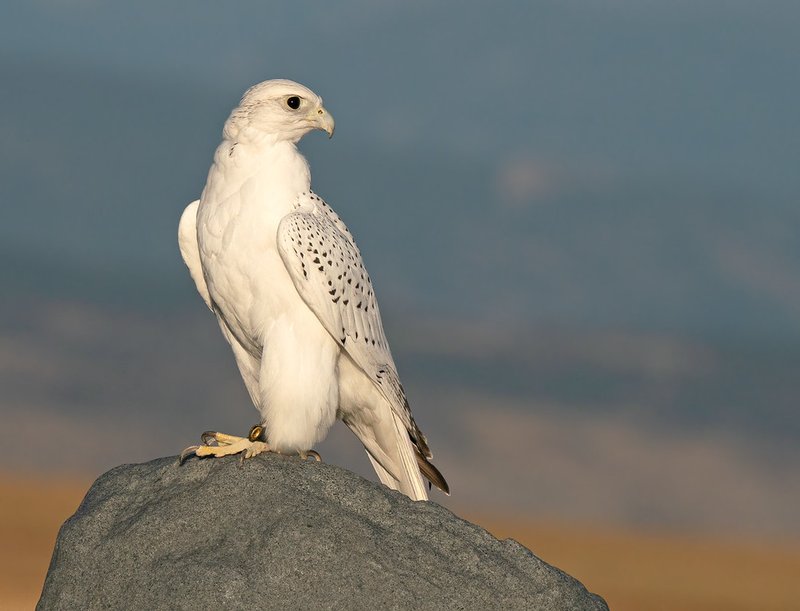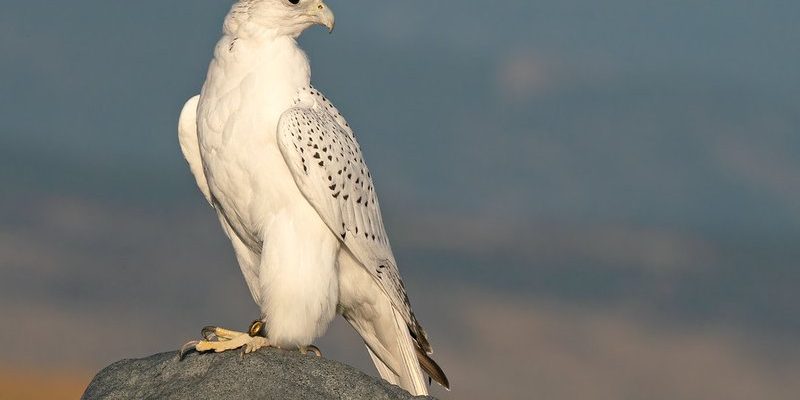
Gyrfalcons are the largest of all falcon species, and they have a wide range of colors from pure white to deep gray. They are known for their impressive hunting skills and strong bonds with their mates. Their courtship rituals are not just for show; they play a crucial role in securing a mate and ensuring the continuation of their species. So, let’s dive into the captivating world of **Gyrfalcon courtship and mating rituals**, exploring how these birds find love and form lasting partnerships.
The Gyrfalcon’s Habitat and Behavior
Before diving into courtship, it’s essential to understand where Gyrfalcons call home. These birds thrive in remote, rugged regions of the Arctic and Subarctic. They prefer mountainous areas, cliffs, and open spaces, where they can easily spot their prey, which mainly includes small mammals and birds. Think of their habitat as a scenic backdrop for their romantic adventures—stunning landscapes filled with icy winds and breathtaking views.
Interestingly, Gyrfalcons are known to be highly adaptable. While they mostly live in cold climates, some populations have been spotted in milder areas during migration. This adaptability isn’t just about survival; it influences their courtship habits too. In areas with abundant prey, Gyrfalcons can afford to be choosy about their mates, leading to more elaborate courtship displays.
During the breeding season, which typically occurs between March and June, male Gyrfalcons become incredibly diligent in showcasing their skills. They engage in a variety of behaviors that highlight their fitness, such as impressive flights and calls. This is their way of saying, “Look at me! I’m a fantastic catch!”
Courtship Displays and Aerial Acrobatics
One of the most striking aspects of Gyrfalcon courtship is their **aerial displays**. Males often perform stunning flight patterns, including swoops, dives, and rolls, to impress potential mates. You might think of it as a high-flying dance where agility and strength are key. These breathtaking moves not only showcase the male’s physical prowess but also his ability to navigate the challenging Arctic environment.
During these displays, the male may also call out to the female with a series of short, sharp notes. These vocalizations can be thought of as a melodic serenade that adds to the spectacle of the aerial dance. The female watches closely, assessing the male’s skills and making her choice based on his performance. It’s a bit like a talent show, where the best performance wins the prize of companionship.
If a female is impressed by a male’s display, she may respond positively, indicating her interest. If not, she might simply fly away. This stage of courtship is critical, as it sets the tone for their relationship. If both birds are interested, they may engage in mutual displays, flying together and mirroring each other’s movements. This shared activity strengthens their bond and prepares them for the challenges of parenting together.
Once courtship has been successful, the next step for Gyrfalcons is to find a suitable nesting site. Gyrfalcons prefer to nest on cliff ledges or in abandoned ravens’ nests, where they can keep their eggs safe from predators. They are very particular about selecting **territories** that offer ample food sources. Just like you might choose a neighborhood based on amenities, Gyrfalcons pick their nesting sites based on the availability of prey and suitable cover.
Once a territory is chosen, the pair will fiercely defend it against other Gyrfalcons. They will engage in aggressive displays, like swooping down and vocalizing loudly to warn intruders. This territorial behavior ensures that they have access to food during the breeding season, which is crucial for raising their young.
The nesting process is quite significant because it strengthens the pair’s bond. The female often takes the lead in building the nest, but the male helps by bringing materials. This teamwork is a vital part of their courtship, reinforcing their partnership and commitment to one another.
Egg Laying and Parental Care
After successfully nesting, the female Gyrfalcon lays eggs—usually between 2 to 5—typically in late April or early May. The eggs are a delightfully speckled cream or brown color, blending perfectly into the rocky environments they inhabit. The female takes on the primary role of incubating the eggs, while the male hunts for food to bring back to her.
During incubation, the male’s role is crucial. He not only provides food but also protects the nesting site from potential threats. Here’s the thing: both parents play a role in raising their chicks once they hatch, which can take about 30 to 35 days. This cooperative care ensures that the chicks receive the best chance of survival in the harsh Arctic conditions.
After the chicks hatch, they rely heavily on their parents for nourishment and protection. The male continues to hunt diligently, providing not just for the female but for the growing family of chicks. This division of labor reflects the strong relationship between the male and female Gyrfalcon—working together to nurture their young.
Challenges in Mating and Survival
While Gyrfalcons have some impressive courtship and parenting strategies, they face numerous challenges. Climate change, habitat loss, and dwindling prey populations can put immense pressure on their mating success. In fact, as their natural habitats shrink, it becomes increasingly difficult for them to find suitable nesting sites or sufficient food.
Another challenge comes from competition with other predators. As they defend their territory, they must be on guard against other birds of prey that may attempt to take over their nests or steal their food. This constant stress can impact their ability to form successful pair bonds and rear healthy chicks.
Moreover, with changing weather patterns, Gyrfalcons may find it harder to synchronize their breeding cycles with the availability of food. A female that lays eggs too early or too late may find that the food sources she relies on are not available when her chicks are hungry. This delicate balance underscores the importance of adaptability and resilience in ensuring the survival of Gyrfalcons in an ever-changing world.
The courtship and mating rituals of the Gyrfalcon are a beautiful reminder of the complexity and wonder of nature. From dazzling aerial displays to nurturing parenting, these birds demonstrate a commitment to both their partners and their offspring. Their rituals aren’t just about finding a mate; they’re about creating a thriving family in one of the harshest environments on Earth.
As we continue to learn more about these incredible creatures, it’s vital to appreciate their role in the ecosystem. Protecting their habitats and understanding their challenges will help ensure that future generations can witness the spectacular courtship of the Gyrfalcon. So, next time you think about love and partnership in nature, remember the Gyrfalcon and their extraordinary journey of romance and survival.

